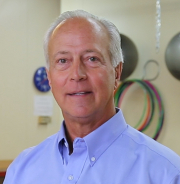The first stop of the FedEx playoffs is at Ridgewood Country Club in Paramus, New Jersey. Today is moving day. It is the day for golfers to make their move and set themselves up for their Sunday finish. All PGA golfers have been playing a lot of golf to get here. The money that is at stake is a great motivator for performance. The capability of the golfer's body is the most important factor affecting their performance. Their desire is to perform, but can they? Diet, rest, recovery, concentration, and neuromuscular factors all contribute to peak performance. Fatigue from an intense PGA schedule will reveal who is most prepared.
The primary physical complaints this week have involved the neck and upper back. General complaints of restlessness and difficulty sleeping are common. Symptoms of neck and upper back pain are bilateral but more prevalent on the lead side, ie, left side for a right handed golfer. Neck pain is often associated with suboccipital headaches.
Throughout the year on the PGA Tour Performance trailers we notice lead shoulder symptoms in many of the golfers. With the schedule being so busy this time of year it is not surprising to see neck and upper back dysfunction affecting the golf swing. Intervertebral facet restriction in the lower cervical spine and elevated first rib restrictions are a direct result of golf posture. Chronically flexing the cervical spine forward and increasing stress on the thoracic kyphotic curve with golf posture will adversely affect cervical facet and upper rib mechanics. Muscular tightness in cervical flexors and deactivation of cervical extensors and scapular retractors must be addressed concurrently. The priority is to correct localized cervico-thoracic dysfunction and symptoms so that the golfer is able to play. Equally important is the structural integrity of the corresponding shoulder, mid back and hips since they have the potential to be the primary cause of the PGA golfer's neck and upper back pain.
Reviewing the golfer's diet and psychological profile is significant in addressing their restlessness and sleep difficulties. Fatigue often fosters restlessness. Most athletes who are overtrained or challenge their bodies without sufficient recovery will suffer from poor sleep patterns. We have to address diet and recovery modalities with PGA players throughout the season. Reevaluation and modifications to the golfer's program have to be made this time of year due to the magnitude of their demands.
Comprehensive treatment of the PGA golfer will maximize their physical capabilities. Combined with the golfer's motivation to compete and perform it is a team approach that is highly likely to be successful!
Note: Ryder Cup captain Jim Furyk has chosen Dr. Tom LaFountain and Jeff Hendra, PT as the official sports medicine staff for the 2018 Ryder Cup in Paris, France this September.

